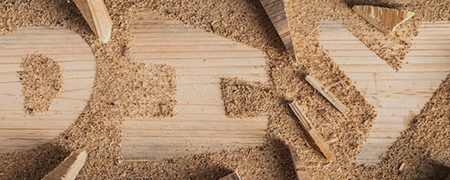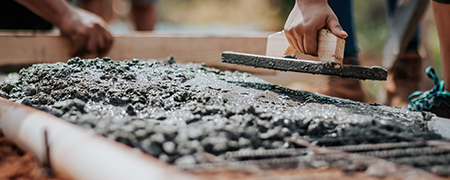Ultimate Guide: Incorporating Wood and Concrete into Your Landscape Design
Are you looking to update your outdoor space and add some personality to your landscape design? Two popular materials to consider incorporating are wood and concrete. These materials are versatile and can add both function and aesthetic appeal to your outdoor living area. In this article, we will discuss the various ways you can incorporate wood and concrete into your landscape design to create a beautiful and functional space.
Understanding the Benefits of Wood and Concrete in Landscape Design
Before we dive into the ways you can incorporate wood and concrete into your landscape design, it’s important to understand why these materials are popular choices for outdoor projects.
Benefits of Wood in Landscape Design
- Natural beauty: Wood offers a warm, natural, and timeless aesthetic that can complement any outdoor design style.
- Durability: With proper care, wood can last for many years, even in outdoor settings.
- Versatility: Wood can be used in a variety of outdoor structures, such as decks, pergolas, fences, and retaining walls.
- Environmentally friendly: Wood is a renewable resource and is biodegradable, making it an eco-friendly choice.
Benefits of Concrete in Landscape Design
- Durability: Concrete is a strong and long-lasting material that can withstand harsh weather conditions and heavy use.
- Design flexibility: Concrete can be molded into various shapes and sizes, allowing for creative designs and unique features.
- Low maintenance: Concrete requires minimal upkeep, making it a practical choice for busy homeowners.
- Affordability: Compared to other materials, concrete is a cost-effective option for outdoor projects.
Incorporating Wood and Concrete into Your Landscape Design
Now that we understand the benefits of wood and concrete, let’s explore how you can incorporate these materials into your landscape design.
- Build a Wood Deck
A wood deck is a classic and timeless addition to any outdoor living area. It provides a space for entertaining, relaxing, and enjoying the great outdoors. When building a wood deck, consider the following:
- Type of wood: Cedar and redwood are popular choices for their natural beauty and durability.
- Deck size: Determine the size and shape of your deck based on your outdoor space and intended use.
- Maintenance: Regular cleaning and staining will help preserve the wood and extend its lifespan.
- Install a Concrete Patio
A concrete patio is a low-maintenance and versatile outdoor surface that can withstand heavy foot traffic and various weather conditions. Here are some considerations when installing a concrete patio:
- Design options: Concrete can be stamped, stained, or scored to create unique designs and patterns.
- Size and shape: Determine the size and shape of your patio based on your outdoor space and intended use.
- Accessories: Consider adding a fire pit, outdoor furniture, or landscaping to enhance your patio’s functionality and beauty.
- Construct a Wood Pergola
A wood pergola is a stylish and functional addition to any outdoor space. It provides shade and privacy while also adding visual interest to your landscape design. When constructing a wood pergola, consider the following:
- Type of wood: Cedar and redwood are popular choices for their natural beauty and durability.
- Pergola size: Determine the size and shape of your pergola based on your outdoor space and intended use.
- Design options: A pergola can be customized with decorative elements such as lattice, trellis, or hanging plants.
- Build a Concrete Retaining Wall
A concrete retaining wall can be both functional and visually appealing. It can prevent erosion, create a level planting area, or add depth and texture to your landscape design. Consider these factors when building a concrete retaining wall:
- Type of concrete: There are various types of concrete, such as poured concrete, concrete blocks, or precast concrete panels. Choose the type that best suits your project needs and budget.
- Height and length: Determine the height and length of your retaining wall based on the slope and size of your property.
- Design options: A retaining wall can be customized with decorative elements such as stone veneer, capstones, or plants.
- Install a Wood Fence
A wood fence is a classic and practical way to enhance your privacy and security while adding beauty to your outdoor space. When installing a wood fence, consider the following:
- Type of wood: Cedar and redwood are popular choices for their natural beauty and durability.
- Fence height and style: Determine the height and style of your fence based on your privacy needs and design preferences.
- Maintenance: Regular cleaning and staining will help preserve the wood and extend its lifespan.
- Create a Wood and Concrete Walkway
A wood and concrete walkway is a unique and creative way to add texture and interest to your landscape design. Here are some considerations when creating a wood and concrete walkway:
- Design options: A walkway can be created with various patterns and colors of concrete, with wood inlays or borders.
- Size and shape: Determine the size and shape of your walkway based on your outdoor space and intended use.
- Maintenance: Regular cleaning and sealing will help preserve the concrete and wood and extend their lifespan.
- Use Wood and Concrete Planters
Wood and concrete planters are a stylish and practical way to add greenery and color to your outdoor space. When using wood and concrete planters, consider the following:
- Type of wood: Cedar and redwood are popular choices for their natural beauty and durability.
- Size and style: Determine the size and style of your planters based on your outdoor space and plant needs.
- Drainage: Make sure your planters have proper drainage to prevent water damage to the wood and concrete.
- Add Wood and Concrete Accents
Wood and concrete accents can add character and visual interest to your landscape design. Consider incorporating these elements:
- Wood and concrete benches
- Wood and concrete fire pits
- Wood and concrete water features
- Wood and concrete sculptures or art pieces
Conclusion
Incorporating wood and concrete into your landscape design can provide a beautiful and functional outdoor space. From decks and patios to pergolas and planters, these materials offer versatility and durability that can withstand the elements and provide a timeless aesthetic. When planning your next outdoor project, consider adding wood and concrete to create a unique and personalized space.
FAQs
- Are wood and concrete materials eco-friendly for landscape design?
- Yes, both materials are eco-friendly and can be sustainably sourced and produced.
- Can I use treated lumber for my outdoor projects?
- Yes, treated lumber can be used for outdoor projects, but make sure it is rated for ground contact and outdoor use.
- What type of concrete is best for outdoor projects?
- Poured concrete and precast concrete panels are good choices for outdoor projects because they are strong and durable.
- How often do I need to maintain my wood and concrete outdoor features?
- Regular cleaning and maintenance can help extend the lifespan of your outdoor features. Follow the manufacturer’s recommendations and consult with a professional if necessary.
- Can I combine other materials with wood and concrete in my landscape design?
- Yes, combining other materials such as stone, metal, or glass can add texture and interest to your landscape design.



